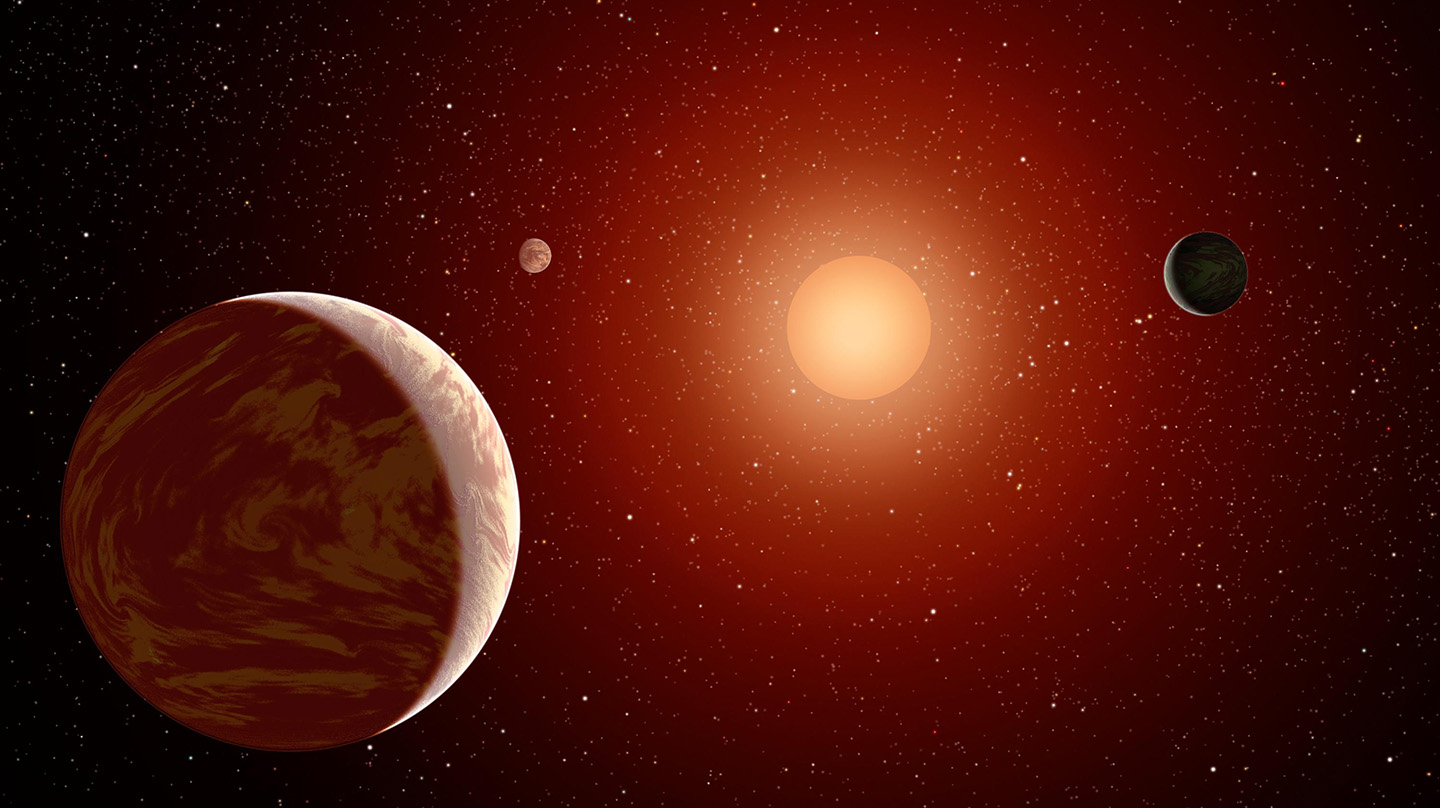Press Release
Exoplanet Team Wins NASA Award to Search for Habitable Planets
NASA recently announced the selection of seven teams as part of its Interdisciplinary Consortia for Astrobiology Research (ICAR) program. Kevin Stevenson, an astrophysicist from the Johns Hopkins Applied Physics Laboratory (APL) in Laurel, Maryland, will lead one of them, focusing on the habitability of rocky planets around small red stars called M dwarfs.
“The team is ecstatic to work on this timely project,” Stevenson said. “M-dwarf stars are by far the most common stars in the solar neighborhood, yet we know very little about the rocky planets that orbit them. Do they have the necessary ingredients for life? We’ll find out.”
Developed to meet the needs of the rapidly growing field of astrobiology, NASA’s ICAR program facilitates large-scale scientific investigations that will address compelling questions in the field, from the origin of planetary systems to whether life exists beyond Earth.
Stevenson’s multidisciplinary team, which includes six investigators from APL, aims to leverage the capabilities of current and future telescopes, including NASA’s James Webb Space Telescope, to understand whether rocky planets around these red stars can support life — and, if so, how to best characterize them.
“Planets orbiting small, nearby stars represent our best — and only — opportunity to search for biosignatures [signs of life] in the next decade,” Stevenson added. “Our models will guide future atmospheric characterization campaigns with Webb and future space-based telescopes and help to inform their interpretations.”
The international team began investigating these questions in 2020, when it received one of the ICAR program’s first awards and stood up the Consortium on Habitability and Atmospheres of M-dwarf Planets, or CHAMPs. In the years since, the group has showcased Webb’s extraordinary capabilities for exoplanet research, including some monumental leaps in the study of planets around M-dwarf stars, such as the discovery of the first exoplanet confirmed by Webb and a super-Earth with an atmosphere potentially rich in water vapor.
Now, with this latest infusion of $5 million over the next five years, the team plans to home in on its core questions.
Titled “Strange New Worlds: Characterizing Nearby M-dwarf Habitable Zone Planets,” the newly awarded project will enhance theoretical modeling tools the team has already started building to determine the habitability of these rocky exoplanets, including where and how these worlds form and evolve, what biological signatures to expect and what physical parameters most influence their habitability. The final product will provide the most realistic and comprehensive simulations of M-dwarf rocky worlds, paving a way to quickly characterize these far-off planets and facilitate the search for life beyond Earth.
Led by APL, the CHAMPs team includes researchers from NASA’s Goddard Space Flight Center; the University of Colorado Boulder; the University of California, Riverside; the University of California, Irvine; Cornell University; the Harvard & Smithsonian Center for Astrophysics; Penn State; Blue Marble Space Institute of Science; Arizona State University; Stanford University; Florida Institute of Technology; and the University of Michigan.
To learn more about CHAMPs, visit https://champs.jhuapl.edu/.
